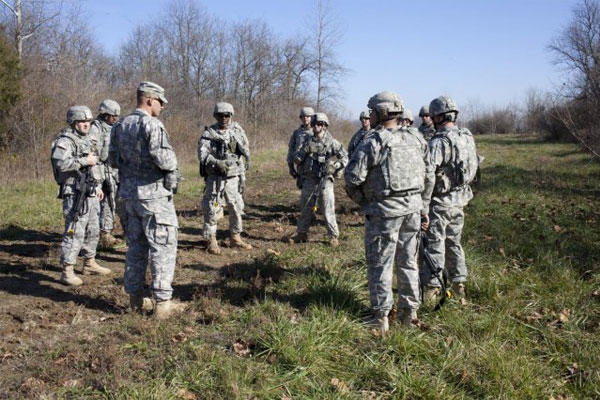The chief of the Army Reserve on Wednesday recommended that Regular Army soldiers be assigned to Reserve units to beef up the component's full-time support and boost readiness.
Lt. Gen. Jeffrey W. Talley, in his last appearance before the Senate Appropriations Committee before retiring, said the Army Reserve's manning support is only about three-quarters of what it needs to be.
"I strongly believe that full-time support is essential for readiness," he said. "Full-time support provides administrative, medical, training, maintenance and mobilization support for Army Reserve units and is absolutely necessary for generating and sustaining individual readiness, [which is] a prerequisite for leader and unit readiness."
He said the Reserve is at only 76 percent of identified requirements and suggested one way to fix that would be to resurrect a program in which active-duty soldiers were used to augment the active Guard and Reserve.
Talley said the program "was tested and implemented back in the '90s and in my opinion should be reinstated." It would benefit the active duty as well as both reserve components, he said.
The Army Reserve's current strength is just over 199,500. The Army National Guard is 348,000.
But both are facing reductions next year, with the Army Reserve going to 195,000 and the Army National Guard to 335,000.
Talley made his recommendation Wednesday as the commanders of the country's reserve components offered their own assessments of needs to the appropriations panel.
A common concern among the reserve leadership is the possibility that the financial relief they gained from the last sequester cuts when lawmakers agreed to a special deal will not be repeated. The onerous Budget Control Act that mandates cuts across the board covers only the 2017 budget unless Congress rescinds it.
Gen. Frank Grass, chief of the National Guard Bureau, said that the coming end-strength reductions will mean the smallest National Guard since the Korean War, notwithstanding the U.S. has military operations backed by reservists across the world.
"We face these realities within a daunting fiscal environment that requires us to balance the need to keep Americans safe against budgetary constraints and increasing national debt," Grass said.
Lt. Gen. Timothy J. Kadavy, director of the Army National Guard, said 2017 funding for construction will allow the guard to take care of only the most critical projects at a handful of locations across the country.
"However, many of our facilities are not modernized," Kadavy said. "Forty-seven percent of Army National Guard facilities are over 50 years old. It is necessary that out-year funding levels increase, as these facilities are in need of extensive modernization and resourcing."
Vice Adm. Robin Braun, chief of the Navy Reserve, said aircraft recapitalization is its "number one equipping priority."
"It is critical for the Navy Reserve's required operational support" to Navy aviation, she said.
Fiscal constraints have created an environment in which the command has to be increasingly focused on extending the service life of its infrastructure and hardware, she said.
"However, each has a finite lifespan and we accept increasing risk as we approach that limit," she said. "Compounding the situation are the long process times at our aviation depot-level maintenance facilities caused by reductions in the skilled work force."
-- Bryant Jordan can be reached at bryant.jordan@military.com. Follow him on Twitter at @bryantjordan.




























